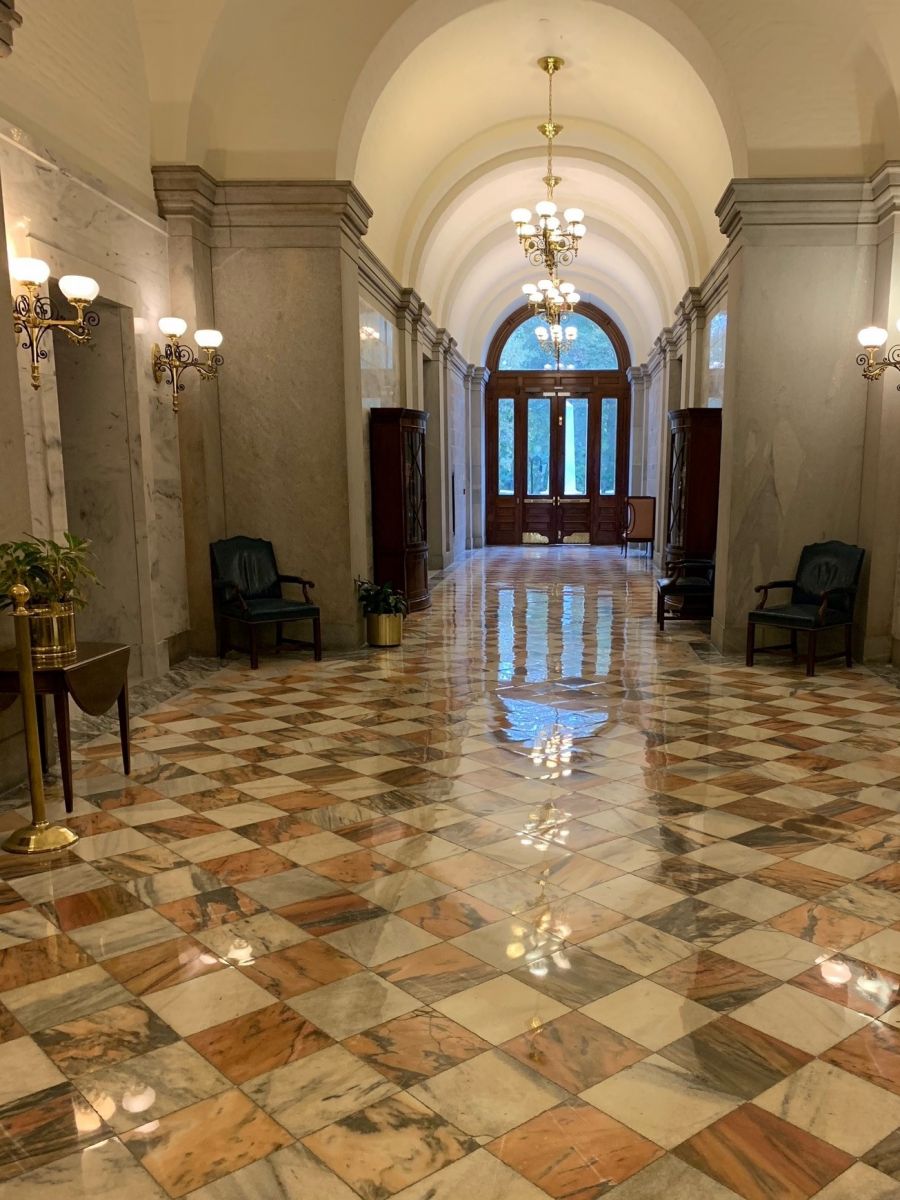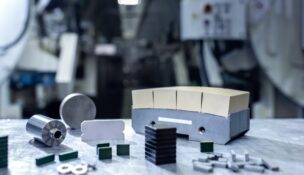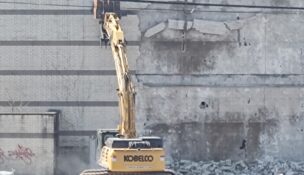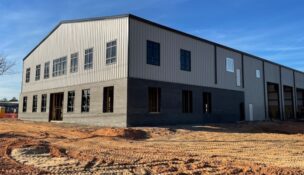Statehouse floors sporting new shine after Mashburn-led makeover
Melinda Waldrop //February 3, 2021//
Statehouse floors sporting new shine after Mashburn-led makeover
Melinda Waldrop //February 3, 2021//

Drew Coleman will have added motivation to visit the S.C. Statehouse soon.
Coleman, director of Mashburn Construction’s upfit division, oversaw an ambitious project to restore and refinish around 19,000 square feet of tile covering the state capitol’s floors. The project, which began when the General Assembly recessed last June and wrapped up in December, included replacing about 1,000 feet of stone with new material sourced from its original Georgia quarry and 1,000 feet of grout replacement.
Though Coleman said it’s unusual for Mashburn to work on government projects, he said the S.C. Department of Administration proved a responsive and easy-to-deal with partner, and he looks forward to showing off the finished product to his entire family.
“I’ll probably end up going over there with the kids one day,” Coleman. “It was cool to take my son one day when he was out of school. He’d never been in there before, (and) I hadn’t visited the Statehouse since I was in fifth grade. I’m 37 now.”
Working closely with project architect Pond & Co., Mashburn restored the shine to tile that Coleman said was last redone in the late 1990s. A mockup of the floor Mashburn performed on a 10-foot section showed just how badly the work was needed.
“In relation to what was there prior, it was night and day,” Coleman said. “You can almost see your reflection in the tile now.”
Before beginning the project, Mashburn and Department of Administration officials walked the Statehouse floors and “spent several hours determining what would be replaced,” Coleman said.
All marble in the project scope area of the first and second floor, along with third-floor bathrooms, was ground, honed and polished. Some tile required patching, or having sections removed and ground to power, then bound with epoxy-based materials to fill cracks or repair corners.
“We did add some scope,” Coleman said. “There were some other areas that were found that had concrete instead of tile. We ended up removing that and put tile in.”
Concrete was replaced with tile in the House of Representatives antechamber and the library, among other areas, though Coleman lamented the fact that around 50% of the tile work was recovered with previously-in-place rugs.
The Legislature was, for the most part, out of session during the work, but the project did have one notable interested observer.
“There were many times that the governor would walk right up to you and ask how things were going and just chitchat with you,” Coleman said. “That’s not something everyone can lay claim to. … A lot of the interaction we had with the state staff inside that building was extremely positive. They were really, really happy to see a historical piece of the state brought back to life.”
Coleman said the plans were well thought-through before work began and that there were no real surprises in the project — “There were no cannonballs underneath a piece of tile or anything.” Going forward, Mashburn may bid on more government projects down the line, according to Lindsey Culley, Mashburn director of marketing and communications.
“We’re looking into 2021 and coming off a very challenging 2020,” Culley said. “The good news is that the view is bright and we feel confident that a lot of things are going to keep moving forward or pick back up where they may have stalled a little bit.”
Founded in 1976, Mashburn has completed numerous recent projects in downtown Columbia, including Market on Main, a restaurant and entertainment venue which opened last year at 1312 Main St. Coleman’s upfit division also oversaw that project.
“These two projects are totally different, but the same division,” Culley said. “It’s a testament to our versatility as a group and as a local contractor. We’re fortunate to be involved in two things that are very different and literally blocks away from each other.”
Culley said Mashburn’s backlog, or future projects the company is contracted to perform, has grown significantly in the last few years and that 2021 projects look good despite a few slowdowns from the effects of the COVID-19 pandemic. She said Mashburn has projects in the pipeline in the hospitality sector and has seen an uptick in industrial and office jobs.
“It may be a different layout of office, but it’s still stuff that’s happening,” she said. “We have very big, more marquee-style projects in each of the various markets that have kind of been hanging on by a thread. We’re waiting to see if those can come to fruition. For the most part, they’re still moving forward, just maybe a little slowly than originally anticipated.”
Culley said no projects in production have been stopped because of the pandemic, and while the company may have experienced some delays in the supply chain, there were no significant interruptions.
The Association of General Contractors’ 2021 Construction Hiring and Business Outlook Survey found that 59% of the more than 1,300 respondents reported that projects scheduled to start in 2020 had been postponed or delayed until this year, while 44% reported 2020 projects canceled. Projects scheduled to begin between January and June 2021 had been delayed for 18% of respondents, while 8% reported cancellations of projects set to start in that timeframe.
“Last year was definitely unique in the fact of having projects just get pulled right out from underneath you in a matter of hours,” said Coleman, who said 2021 has brought “an uptick in some prospective work. Typically January through February is kind of slow anyway for us. We are seeing a little bit more, which is good.
“I think we’re all happy to see 2020 go, from a personal and professional business perspective.”
Coleman’s approach to 2021 is to “ride this thing out a little longer. With interest rates the way they are, it’s definitely a prime time to build something,” he said. “The caveat would be that material costs have shot through the roof. Hopefully, those things will even out a little bit.”
This article first appeared in the Feb. 1 print edition of the Columbia Regional Business Report.
t















